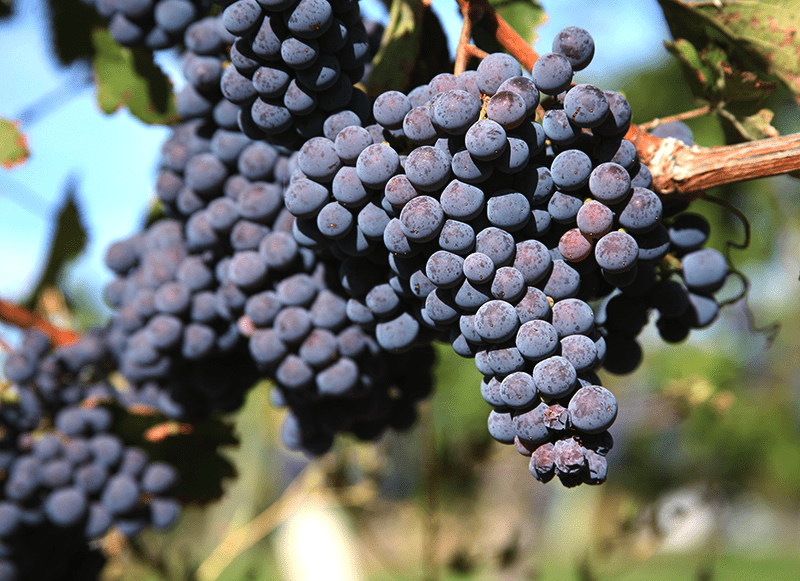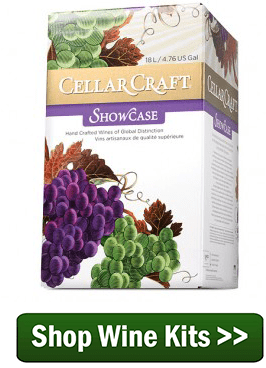 I am interested in making Merlot wine. I have found all your wine kits for this, but don’t quite understand how theyare used. Can you turn any fruit juice into a merlot with these kits? Do you mix the contents of the kit with the particular type of merlot you wish to make, like blackberry juice.
I am interested in making Merlot wine. I have found all your wine kits for this, but don’t quite understand how theyare used. Can you turn any fruit juice into a merlot with these kits? Do you mix the contents of the kit with the particular type of merlot you wish to make, like blackberry juice.
Thank you,
Nancy
_____
Hello Nancy,
I see there is a little bit of confusion about how different wine’s can be made from grape juice. Let me see if I can clear things up a bit.
The Merlot wine you mentioned is made from Merlot grapes. The same holds true for many other wines you may see on the store shelf: Cabernet Sauvignon, Chardonnay, Zinfandel. These wines are made primarily from the grape after which they are named. Cabernet Sauvignon is a grape; Chardonnay is a grape; and so on. These wines are known as varietals.
However, this is not true for all wines. For example, a wine labeled Burgundy indicates that grapes primarily used to make it where grown in the Burgundy region of France. It does not make mention of the specific grape varieties used, even though a Merlot grape could have been used in part since it is a grape that is grown extensively in Burgundy, France. These wines are known as appellation wines. The emphasis is on the where not the what.
So when you ask: how are different wines made from grape juice? The real answer is different wines are made from different grape juices.
Many people are surprised to find that there are so many different grape varieties used to make wine. They just assumed that a hand-full of types were used to make a lot of different variations of wine, but that isn’t so. In reality, there are hundreds, if not thousands, of different grape varieties from which wine can be made.
The wine ingredient kits you are referring to are basically concentrated grape juice packaged along with a few small packets of other ingredients such as wine yeast, clarifiers, stabilizers, etc.. You just add water and ferment the mix as called for by the directions that are included. Currently, we offer Merlot in seven different brands along with some Merlot blends.
They vary in price in accordance to their quality and how specific the region they are from is indicated. Lower priced wine ingredient kits might only specify which continent the grapes came from. These concentrates would be appropriate for making everyday drinking wines. Higher priced wine ingredient kits can be as specific as the particular growing region within a country. For example, Napa valley as opposed to Sonoma valley. These concentrates make fabulous wines with characters representative of that growing region. This is known as a wine’s terroir.
So that’s how different types of wines are made from grape juice. It’s all about the grape and where it was grown. I hope this information helps you out.
Happy Winemaking,
Ed Kraus
—–
Ed Kraus is a 3rd generation home brewer/winemaker and has been an owner of E. C. Kraus since 1999. He has been helping individuals make better wine and beer for over 25 years.

I have two wine kits I purchased in January. Due to remodeling my wine making space is shut down. My question is how long the juice will hold before I am in danger of losing it. It has been kept at 68 degrees or less since arriving in January.
Thanks
Richard
Richard, if you are talking about bag-in-box wine ingredient kits, you’ll be happy to know that they are very stable. If you purchased them from us, we recommend using them within a year. If they were purchased elsewhere, it will depend some on how old the kit was when purchased.
I just bottled my wine that I have had ageing since ’13. Prior to bottling, it was crystal clear and had a .995/.996 s.g..
I read my notes from my “Winemakers Log” that I bought from your site, and would recommend to anyone, that I previously used campden tablets at bottling and my wine clouded. Not wanting that halved the amount suggested, so I used 1/2 per gallon, and it still clouded my wine.
Should I be using another product at the time of bottling? Will this haze disappear?
Thank you.
Jay, besides stating the obvious possibility: that you stirred up some sediment when adding the Campden tablets, it could be an indication that the acidity of your wine is too low. This can cause a cloudy reaction to occur when adding sulfites to the wine. Even so, it is a temporary reactions and should clear up in a few days.
Ed,
Thank you for answering.
Of the two I’ll lean towards the acidity. It was .65, for a red, prior to fermentation.
Is this a step I can avoid in the future or is there another product that I can use instead?
Thanks again.
Jay, you can skip sulfites at bottling time, but what you’ll find is that the wine will not keep as well. Oxidation of the wine will occur more easily and spoilage will be more likely. The only way around this and still have the same quality and stability in a wine would be to store it in a refrigerator.
I MADE A WHITE GRAPE WINE THIS YEAR,NICE BODY,AND GREAT TASTE . WHAT I
WOULD LIKE TO KNOW IS HOW IT GOT ALL THE LITTLE BUBBLES.ALMOST LIKE
CHAMPAIGN I DID NOTHING I KNOW OF TO GET THIS GREAT TASTING WINE. I am
QUITE SURE THE FERMENT HAD STOP WHEN I BOTTLED. THE GRAPES WERE DEAD
RIPE WHEN I STARTED. THANKS FOR YOUR TIME & HELP!!
Jim—N.C.
James, the bubbles come from the fermentation. It is CO2 gas. During the fermentation CO2 comes off the wine must in a great amount. After the fermentation some of the CO2 will stay saturated into the wine. With time, siphoning (racking) and other agitation, the saturated CO2 gas will be driven out of the wine before bottling. If not enough agitation occurs you will trap some of the CO2 gas into the bottle. So, even if the fermentation was complete, you can still have CO2 in the bottle. With that said, it could be that your wine is starting to ferment again while in the wine bottle. If you did not check to see that the fermentation actually completed before it stopped, this could be the situation. In this case the fermentation could continue on long enough in the wine bottles to cause corks to pop or bottles to explode, so you should be very aware of this possibility. Here is some more information on this:
How To Know If Your Fermentation Is Done
http://www.eckraus.com/blog/how-to-know-if-your-fermentation-is-done
Is My Wine Ready To Bottle?
http://www.eckraus.com/blog/is-my-wine-ready-to-bottle
Help! My Wine Is Carbonated
http://www.eckraus.com/blog/help-my-wine-is-carbonated
Degassing Homemade Wine
http://www.eckraus.com/blog/degassing-homemade-wine
Ed,
I’m wondering, can I add the campden tablets, that I would normally add at bottling, earlier in the process? Maybe when my fermentation has completed and I’m siphoning my wine off its sediment?
Thank you,
Jay
Jay, Campden tablets do not want to stay in the wine. They want to leave as a gas. For this reason, any Campden tablets you add earlier in the process will not be there when it comes time to bottle. Here is come more information on this:
Using Campden Tablets: The How, When and Why
http://www.eckraus.com/blog/using-campden-tablets
I use metabisulfite in the beginning of fermentation. And I use potassium sorbate in the first rack to kill the yeast. I rack 4 to 6 times and bottle. When I bottle I replace the air in the bottle with CO2 just before I cork or screw on the top of bigher jugs. My wines are extremely clear and are excellent at 1 year and keep for up to 3 years so far.
Hope this helps someone.
Eric